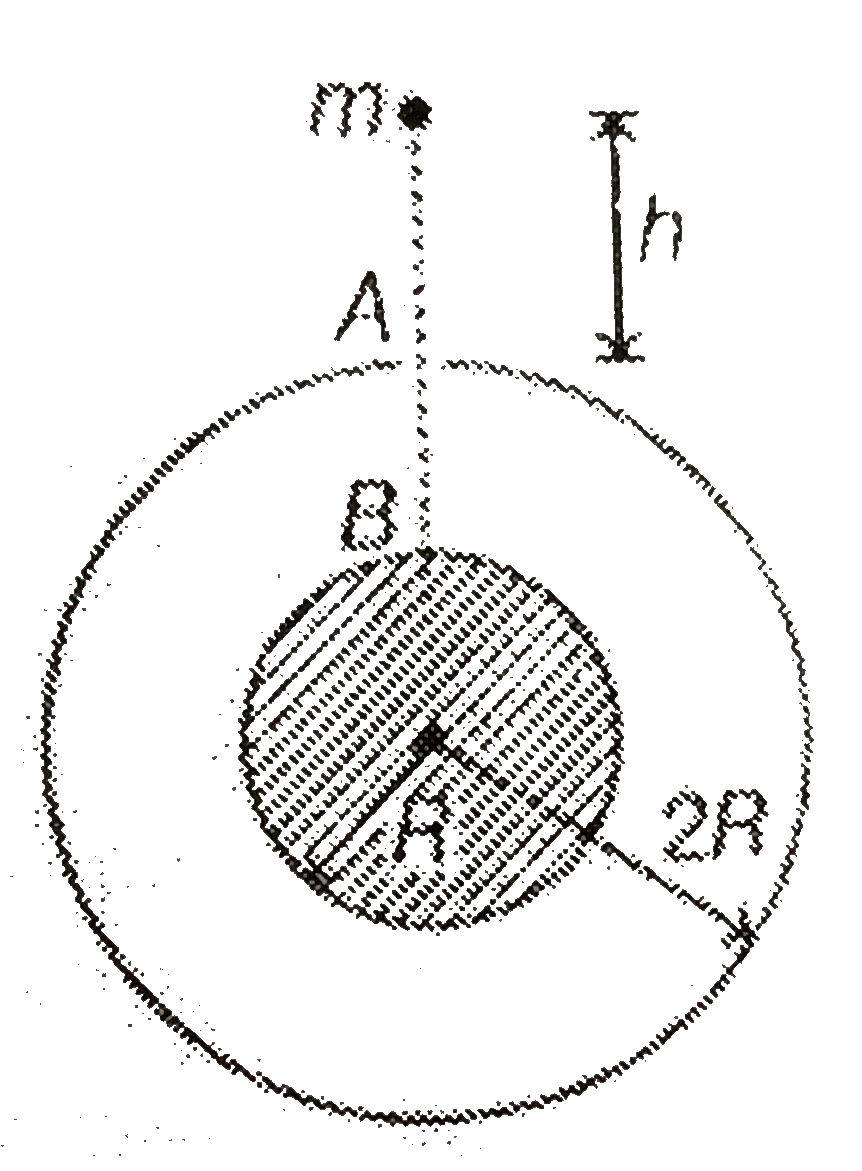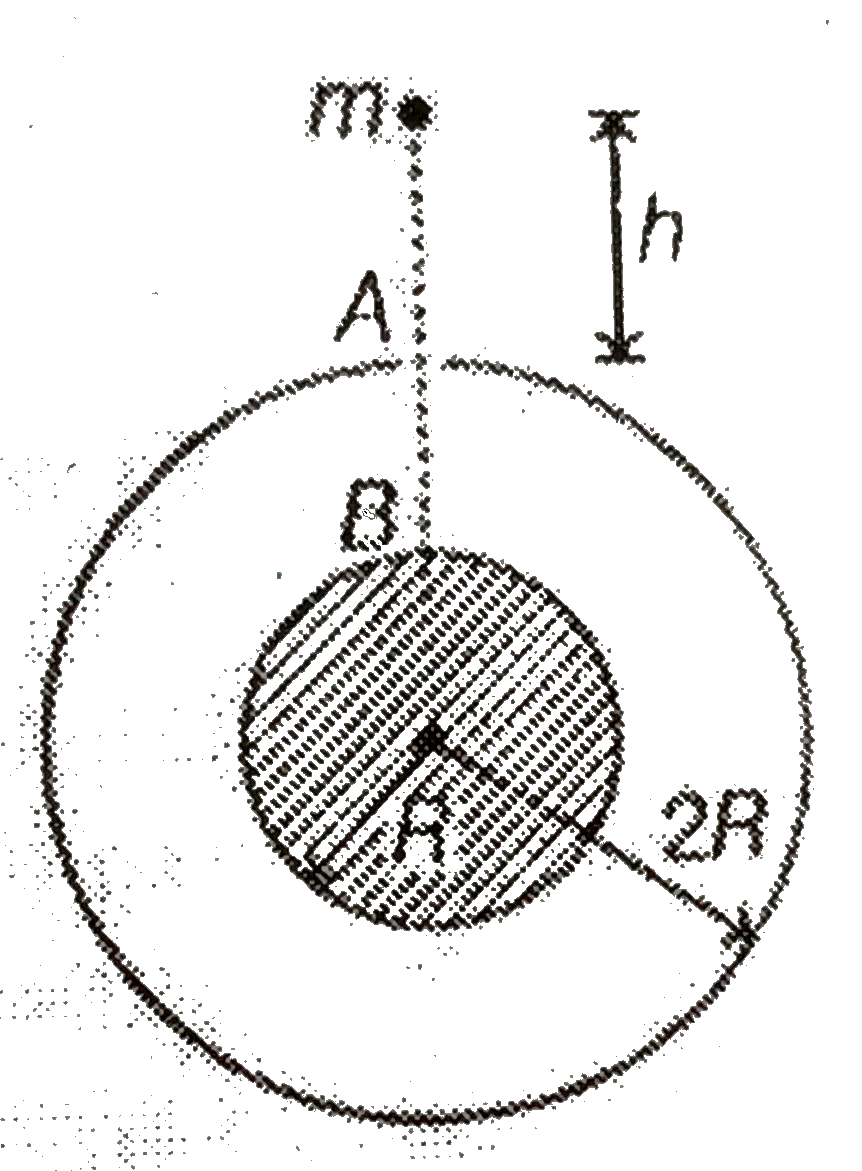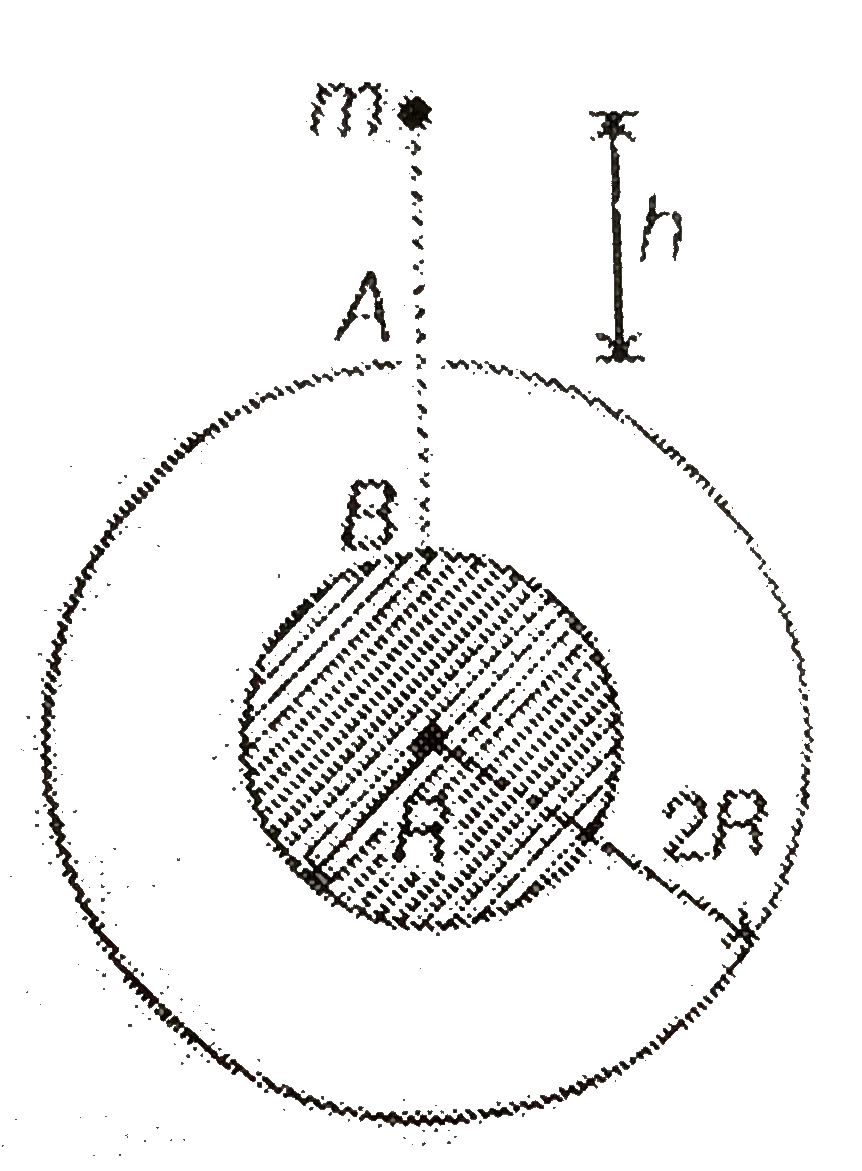A spherical planet far out in space has mass 2M and radius a. A particle of mass m is falling freely near its surface. What will be the acceleration of that particle ?
The correct Answer is:C
To find the acceleration of a particle of mass m falling freely near the surface of a spherical planet with mass 2M and radius a, we can use Newton's law of gravitation. Here is the step-by-step solution:
Step 1: Understand the gravitational force
The gravitational force F acting on the particle of mass m due to the planet is given by Newton's law of gravitation:
F=G⋅Mp⋅mr2
where G is the gravitational constant, Mp is the mass of the planet, and r is the distance from the center of the planet to the particle. Since the particle is near the surface of the planet, r is approximately equal to the radius of the planet a.
Step 2: Substitute the values
Given that the mass of the planet Mp=2M and the radius r=a, we can rewrite the gravitational force as:
F=G⋅(2M)⋅ma2
Step 3: Relate force to acceleration
According to Newton's second law, the force acting on the particle is also equal to the mass of the particle multiplied by its acceleration a:
F=m⋅a
Step 4: Set the equations equal
Now, we can set the two expressions for force equal to each other:
m⋅a=G⋅(2M)⋅ma2
Step 5: Cancel out mass m
Since m is present on both sides of the equation, we can cancel it out (assuming m≠0):
a=G⋅(2M)a2
Step 6: Rearrange to find acceleration
Rearranging this equation gives us the expression for the acceleration a:
a=2GMa2
Final Result
Thus, the acceleration of the particle falling freely near the surface of the planet is:
a=2GMa2
The gravitational force F acting on the particle of mass m due to the planet is given by Newton's law of gravitation:
F=G⋅Mp⋅mr2
where G is the gravitational constant, Mp is the mass of the planet, and r is the distance from the center of the planet to the particle. Since the particle is near the surface of the planet, r is approximately equal to the radius of the planet a.
Given that the mass of the planet Mp=2M and the radius r=a, we can rewrite the gravitational force as:
F=G⋅(2M)⋅ma2
According to Newton's second law, the force acting on the particle is also equal to the mass of the particle multiplied by its acceleration a:
F=m⋅a
Now, we can set the two expressions for force equal to each other:
m⋅a=G⋅(2M)⋅ma2
Since m is present on both sides of the equation, we can cancel it out (assuming m≠0):
a=G⋅(2M)a2
Rearranging this equation gives us the expression for the acceleration a:
a=2GMa2
Thus, the acceleration of the particle falling freely near the surface of the planet is:
a=2GMa2
Topper's Solved these Questions
- GRAVITATIONBOOK - DC PANDEY ENGLISHCHAPTER - GRAVITATIONEXERCISE - Check Point 10.2
20 Videos
- GRAVITATIONBOOK - DC PANDEY ENGLISHCHAPTER - GRAVITATIONEXERCISE - Check Point 10.3
15 Videos
- GRAVITATIONBOOK - DC PANDEY ENGLISHCHAPTER - GRAVITATIONEXERCISE - Level 2 Subjective
14 Videos
- GENERAL PHYSICSBOOK - DC PANDEY ENGLISHCHAPTER - GENERAL PHYSICSEXERCISE - INTEGER_TYPE
2 Videos
- KINEMATICSBOOK - DC PANDEY ENGLISHCHAPTER - KINEMATICSEXERCISE - INTEGER_TYPE
10 Videos
Similar Questions
A spherical planet far out in space has a mass M0 and diameter D0. A particle of mass m falling freely near the surface of this planet will experience an accelertion due to gravity which is equal to
View SolutionA spherical planet far out in space has a mass M0 and diameter D0. A particle of mass m falling freely near the surface of this planet will experience an accelertion due to gravity which is equal to
View SolutionA spherical planet far out in space has a mass M0 and diameter D0. A particle of mass m falling freely near the surface of this planet will experience an accelertion due to gravity which is equal to
View SolutionA spherical planet far out in space has a mass M0 and diameter D0. A particle of mass m falling freely near the surface of this planet will experience an accelertion due to gravity which is equal to
View SolutionA thin spherical shell of mass M and radius R has a small hole. A particle of mass m released at its mouth. Then
View SolutionA solid sphere of mass M and radius R is surrounded by a spherical shell of same mass M and radius 2R as shown. A small particle of mass m is released from rest from a height h(<<R) above the shell. There is a hole in the shell.

At what time will it enter the hole at A
View SolutionA solid sphere of mass M and radius R is surrounded by a spherical shell of same mass M and radius 2R as shown. A small particle of mass m is released from rest from a height h(<<R) above the shell. There is a hole in the shell.

What speed will it collide at B?
View SolutionA solid sphere of mass M and radius R is surrounded by a spherical shell of same mass M and radius 2R as shown. A small particle of mass m is released from rest from a height h(<<R) above the shell. There is a hole in the shell.

What time will it take to move from A to B?
View Solution_E01_069_Q01.png)
A solid sphere of mass M and radius R is surrounded by a spherical shell of same mass M and radius 2R as shown. A small particle of mass m is released from rest from a height h(<<R) above the shell. There is a hole inn the shell.
QIn what time will it enter the hole at A
View SolutionA fixed spherical shell of inner radius R and outer radius 2R has mass M, A particle of mass m is held at rest at a distance 2R from the surface of the body. If the particle is released from that point, with what speed will it hit surface of the spherical body ?
View Solution
